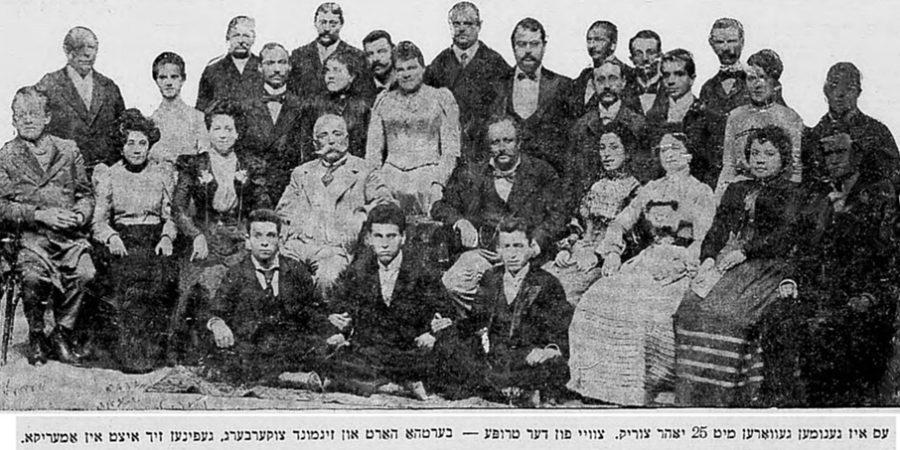This version of Michael Aylward’s article “Shund on Shellac or Gimpel’s Theatre, Lemberg” is based on a much longer version with various appendices. The complete version is posted in PDF format at the bottom of this article and may be downloaded. If you wish to quote from either of these versions, you are free to do so, but please acknowledge your source.
The article was written in 2008 for publication in the UK in the journal Jewish Culture and History. Unfortunately, the edition in which it was due to appear never saw the light of day. Nevertheless, research into the history of the theatre has continued relentlessly ever since and a greatly expanded version of this article is now in preparation, but it will be some time before this is available.
***
Gimpel’s Theatre in Lemberg, once synonymous with popular Yiddish theatre in eastern Europe, is now no more than a footnote in the history of the Yiddish stage. This forgotten theatre, which provided the American Yiddish theatre with many of its greatest stars, left behind an equally forgotten legacy – a collection of hundreds of gramophone recordings which provide a living document of the theatre in its heyday in the decade before the First World War. This article describes this recorded legacy, setting it in the context of the theatre’s 50-year history of almost uninterrupted activity from 1889 to 1939, and also highlights the potential contribution that early commercial gramophone recordings can make to a wide range of cultural studies – a potential contribution that is still consistently ignored.
Introduction
At the start of his essay Yidish teater in Galitsye [Yiddish Theatre in Galicia], Mikhl Vaykhert [Michael Weichert] describes the obstacles that confronted him in his attempt to write on this subject: “The trouble is that I have no material. The meagre pool of knowledge shared by those with a good memory is scattered and dispersed throughout the Jewish Diaspora. Few posters and photographs have been preserved and complete sets of newspapers from those years either do not exist or are inaccessible. In general there is no interest among us for such ‘foolishness’.”
A bleak picture and one that has changed little since this essay was published in the Sefer Galitsye [Book of Galicia] in 1968. The ‘legitimate’ Yiddish theatre, typified by such august companies as the Vilner Trupe (Poland), the Moscow State Jewish Theatre and Artef (USA), has over the years continued to arouse interest and attract scholarly research, but this is not the kind of theatre Vaykhert had in mind. His essay deals primarily with popular Yiddish theatre in Galicia, with the emphasis very much on Gimpel’s theatre in Lemberg, a prime example of that much maligned and unique mix of drama, melodrama, vaudeville and operetta/opera often dismissed under the contemptuous term shund [rubbish]. The pariah-like status this kind of theatre had to endure both during and after its heyday has contributed greatly to its slide into oblivion and subsequent neglect by historians of the Yiddish theatre.
In recent years, however, there have been encouraging signs of a long overdue revival of interest in the subject of popular Yiddish theatre in Europe and a variety of works have appeared which make important contributions to the topic, but none that deal exclusively with it.
While it is true that the lack of material that Vaykhert laments continues to be something of a problem, there is one source he does not mention which is able to bring to life in the most vivid manner imaginable the sounds and atmosphere of popular Yiddish theatre in Galicia. This hitherto untapped resource is the gramophone record.
The decade and a half preceding the First World War was a period of intense activity on the part of the numerous record companies that were springing up all over Europe. Every imaginable kind of music was recorded on a scale that is hard to believe. The range was vast and included many recordings made by artists from Yiddish theatres all over Europe. London, Vienna and Warsaw figured prominently as locations for recordings from the Yiddish theatre, but above all the record companies focussed on Gimpel’s Theatre in Lemberg.
Between 1904 and 1913 at least 600 titles were recorded in Lemberg by artists from this theatre by record companies such as Favorite, Beka and the Gramophone Company. These 600 are among the 11,000 or so recordings that I have managed to document over the last 12 years in the course of my work on a Discography of Early European Recordings of Jewish Music. Nevertheless, gaps in matrix and catalogue number series indicate that the actual figure may even be as high as 800. In fact, if it ever proves possible to document in detail the activities of the Pathé company in Eastern Europe, even this high figure may need to be increased.
Just as the topic of popular Yiddish theatre has been unjustly neglected, so has the history of the early years of the gramophone industry. Although the commercial recordings made during this period survive in significant numbers, their potential as a source of historical, sociological, musicological and linguistic research is pointedly ignored by much of the academic world.
Field recordings are generally accepted by musicologists as a legitimate source for research, but commercial recordings are still considered beyond the pale. The term ‘commercial’ with its connotations of vulgarity and superficiality, casts a dark shadow. Whereas field recordings, which are mostly rural in origin, are romantically considered the unadulterated expression of the nature and art of some fondly imagined pure folk community, commercial recordings are instinctively regarded as somehow tainted, the product of a corrupt urban culture, manufactured to satisfy an artificially created commercial demand and, consequently, not authentic. This may well be the case (but only to a certain extent) as regards recordings made in the later years of the gramophone industry, but it is palpable nonsense to treat commercial recordings made before the First World War in this way.
To be fair, this romantic ideology based on extremely dubious notions of authenticity is not the sole reason for the neglect of commercial recordings as source material. For example, a musicologist cannot begin any kind of meaningful analysis until certain very basic facts are established. Chief among these are knowing where and when the recording was made. The provision of such data is one of the duties of the discographer, but discography is still in its infancy and for many early recordings such information is at the moment simply not available. Whereas classical music and jazz have on the whole been well-served by their devotees who have always worked hard to provide substantial reference works documenting the recorded legacy of these genres, other less mainstream categories have been neglected.
There is some justification for claiming that many commercial recordings made before 1914 should be treated as urban field recordings and granted the same status as rural field recordings. The recording equipment used during this period by commercial companies was very portable; in many ways it was very similar to the equipment being used by ethnomusicologists out in the countryside, though it was rather bulkier. Thanks to this portability, recording companies were not constrained by the need to set up and run costly and static recording studios. Overall their overheads were much lower than they were to become in later years and so companies could afford to take much greater risks and record a far wider and more adventurous repertoire than was later to be the case. Their sound engineers, a truly remarkable breed of men whose history is yet to be written, roamed the remotest corners of the world, recording more or less anything that appealed to them or which their local agents recommended.
An additional factor to consider is that financial gain was probably not the overriding motive when it came to the recording repertoire. These records were not necessarily meant to provide a profit – at this stage of the industry’s development the real money lay in the sales of the machines on which the records were to be played. Many of the main companies manufactured not only records but also the machines on which to play them. To a certain extent the records were used as loss-leaders, an incentive to persuade the public to buy the companies’ machines.
This would readily explain why during this period such a large number of what would later be regarded as highly obscure recordings catering to a specialist market were made. Bosnian epic songs, Romanian gypsy bands, Tartar street musicians, Japanese actors from the Noh theatre, Caucasian Mountain Jews, and recordings of Armenian, Chechen and Ingush musicians are typical of the kind of non-mainstream artists recorded by the first generation of pioneering sound engineers.
To sum up, researchers have at their disposal a vast storehouse of early recordings of every conceivable kind made in every corner of the world. These recordings are lying around in sound archives and in the hands of private collectors all over the world. Their existence is no secret and yet they continue to be ignored. This is a bizarre state of affairs that needs to be remedied at the earliest opportunity, not only because of the inherent worth of these recordings, but because they are under great physical threat. Even as these lines are being written, someone somewhere is no doubt transporting to their local tip a bedraggled collection of nondescript old 78s with no idea as to what treasures they might be disposing of. Even worse is the kind of institutionalised vandalism that has seen archives deliberately destroy or disperse large parts of their collections of shellac recordings in order to save space for far less important material.
These comments, it should be emphasised, by no means apply solely to commercial recordings of Jewish music, but to commercial recordings in general. For an extended treatment of the subject of commercial recordings and their potential significance for musicological and other research, I would recommend readers to obtain copies of several illuminating articles written by two Finnish researchers, Dr. Risto Pekka Pennanen and Pekka Gronow.

The purpose of this essay is twofold – firstly, to provide for the first time in English a very brief history of Gimpel’s Theatre in Lemberg and secondly, to give an overview of the recordings the theatre made in the decade preceding the First World War – recordings which deserve to be treated with the same respect and seriousness accorded, for example, to the field recordings being made in rural Hungary by Bartók and Kodály at precisely the same time.
Part I: Gimpel’s Theatre, Lemberg – A Short History
This account of the theatre draws on six main sources: Shloyme Prizament’s essay Yidish teater in Lemberg [Yiddish Theatre in Lemberg], Yonas Turkov’s essay Dray doyres Gimpel [Three Generations of the Gimpel Family], Doris A. Karner’s book Lachen unter Tränen [Laughter Amid Tears], Mikhl Vaykhert’s essay Yidish teater in Galitsye [Yiddish Theatre in Galicia], Józef Gelston’s essay Lwów I Śpiewacy Brodzcy [Lwów and the Broder Singers] and various entries in Zylbercweig’s Leksikon fun yidishn teater [Lexikon of the Yiddish Theatre]. The essays by Prizament, Turkov and Vaykhert have the advantage of being written by people who had first-hand experience of Gimpel’s theatre. Shloyme Prizament’s brother, Yankev, was part of the Gimpel troupe and Shloyme himself was also loosely associated with it (in fact he appears on several of the recordings); Turkov frequently staged productions for the theatre during the inter-war years and Vaykhert, later to become a major artistic director in the Yiddish theatre, was a student at Lemberg university at the time the recordings discussed in this article were being made. As far as I am aware, Doris A. Karner’s work is the only source that is based on archive material.
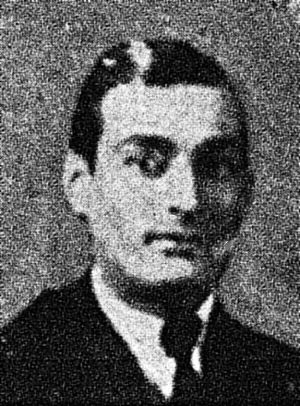
All these sources contradict each other in various ways, none of them, thankfully, of critical significance. I shall point out such discrepancies, but shall try to resist the temptation to reconcile them. Such a task shall have to wait for another occasion, once I have had the opportunity to examine other sources that have recently come to my attention. Nevertheless, these sources alone provide enough information to allow a fairly detailed account of the theatre, sufficient at least for the limited purposes of this article which is little more than an initial foray into the subject. I am very conscious of the fact that two major figures are given short shrift in what follows – I am referring to Khone Volfstal and Yulius Gutman (familiarly known as ‘Yidl Gutman’) whose contributions as musician and actor-director respectively were of enormous importance. They will receive the recognition they deserve at some later date. The one thing that is lacking in all the accounts I have drawn on in writing this article is a decent detailed chronology – all sources are frustratingly short on dates, to the extent that here and there it will be necessary to speculate or make assumptions.
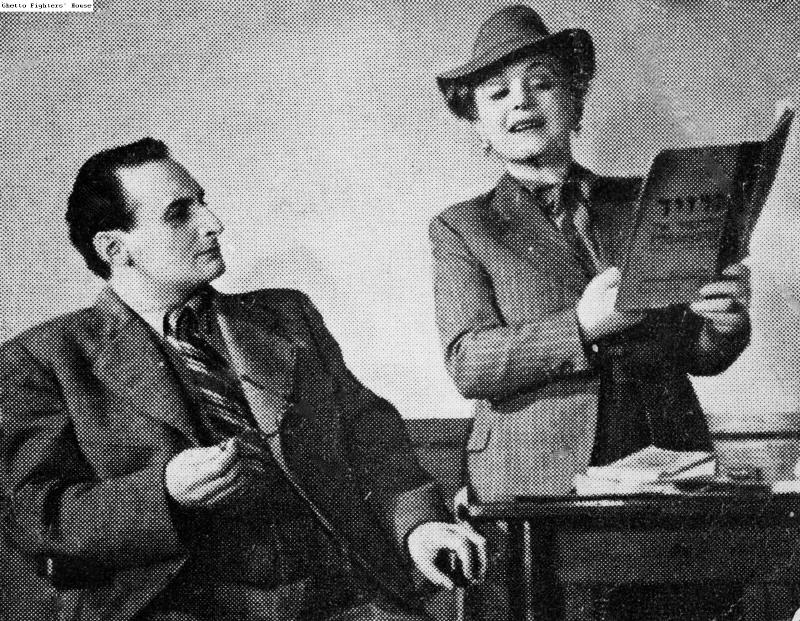
Galicia and Lemberg at the turn of the century
Leopolis, Lemberg, Lwów, L’viv – the very name, as it undergoes its periodic transformations, reflects the multi-facetted, ever-shifting nature of the city and of Galicia, the region of which it was the capital.

Founded in 1256 or thereabouts by the Ruthenian prince Lev Danylo (or his father) and bearing the latinized version of its founder’s first name (Lev=leo=lion) the city was home to Jews long before Poles or Germans settled there. The first Jews in Lemberg were Karaites, referred to as ‘Saracens’ in the city’s records (the same records refer to Rabbinite Jews as ‘Judaei’) and for the first 100 years of the city’s existence they lived there alongside the other main ethnic groups – Ruthenians, Armenians and Tartars. In 1340 the city was captured by Casimir the Great and for the next four and a half centuries Lemberg was under Polish control. Soon after the capture of the city by Casimir, German Jews settled in Lemberg and were granted equal rights with the city’s Christians by the king. No doubt they brought Yiddish with them and we can say with reasonable justification that Polish and Yiddish arrived in Lemberg almost simultaneously. Both languages were destined to vanish from the city’s streets as simultaneously as they arrived, for after 1945, the city’s Jewish population having been murdered and its Polish inhabitants expelled, Polish and Yiddish disappeared along with the populations that had spoken them.
Following the First Partition of Poland in 1772, Lemberg and Galicia were incorporated into the Austro-Hungarian Empire of which they remained a part up until the fall of the Empire in 1918. By 1900 Lemberg was, after Vienna, Budapest, Prague and Trieste the fifth largest city in Austria-Hungary.
Throughout the era of Austro-Hungarian rule, Jews in Galicia comprised a steady 10 to 11 per cent of an ever-increasing population, a population sunk in the most abject poverty which from the 1880s onwards was driving Jews, Poles, Ruthenians and Germans to flee Galicia in huge numbers, either emigrating to the USA, Canada and Brazil or, particularly in the case of Galicia’s Jews, making their way to Vienna.
According to the census of 1900 the total population of Galicia was 7,315,939, of which 811, 371 were Jews; Lemberg’s population was 159,618 and its Jewish inhabitants numbered 44,801 (i.e. 28% of the whole). Their language was, of course, Yiddish and with such a large Yiddish-speaking population living under the relatively benign Habsburg administration it might be thought that these were ideal conditions for the rise of the Yiddish theatre. In truth, however, other factors were at play that completely negated these seemingly favourable conditions. These factors were Hasidism, Haskalah, Zionism and assimilation.
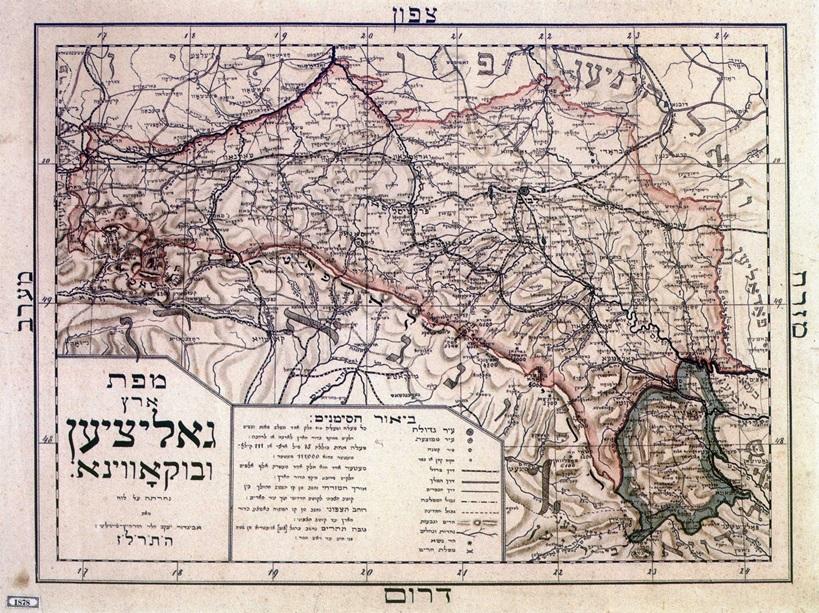
In the late nineteenth century, Hasidism was still the dominant ideology among Galician Jews. Although Yiddish was the language of daily Hasidic life, the very idea of Yiddish theatre was profoundly shocking, a secular outrage to the religious sensibility. No support for the Yiddish theatre could therefore be expected from these quarters.
The Haskalah, the Jewish Enlightenment, had spread from Berlin to Galicia in the early nineteenth century and there had found its most vigorous expression in a bitter war against Hasidism. Although the polar opposite of Hasidsim, the Haskalah too was hostile towards the Yiddish theatre, but on linguistic rather than moral grounds. For proponents of the Haskalah, referred to as maskilim, the favoured medium of expression was either German or Hebrew, a language which they now began to revive and promote with missionary zeal, all the while conducting the most negative campaign against Yiddish as a primitive non-language, a mere jargon used by the ignorant masses (the maskilim, it should be noted, came almost exclusively from the educated middle class). True, there was a minority of maskilim who used Yiddish, but this was merely a proselytizing tactic – the long-term aim remained the replacement of Yiddish by Hebrew. Again, no support for the Yiddish theatre would have been forthcoming from these quarters.
Zionism too was hostile to Yiddish and did everything in its power to discourage its use, often resorting to attacks on the language couched in the most unseemly terms. A notable exception to this policy was the socialist Zionist movement Po’alei Zion [Workers of Zion], which was very active in the defence of Yiddish. In this it was aided by the Jewish wing of the Social Democratic Party which for a short while (1905 – 1911) also had it own break-away group in the shape of the Jewish Social Democratic Party (òPSD).
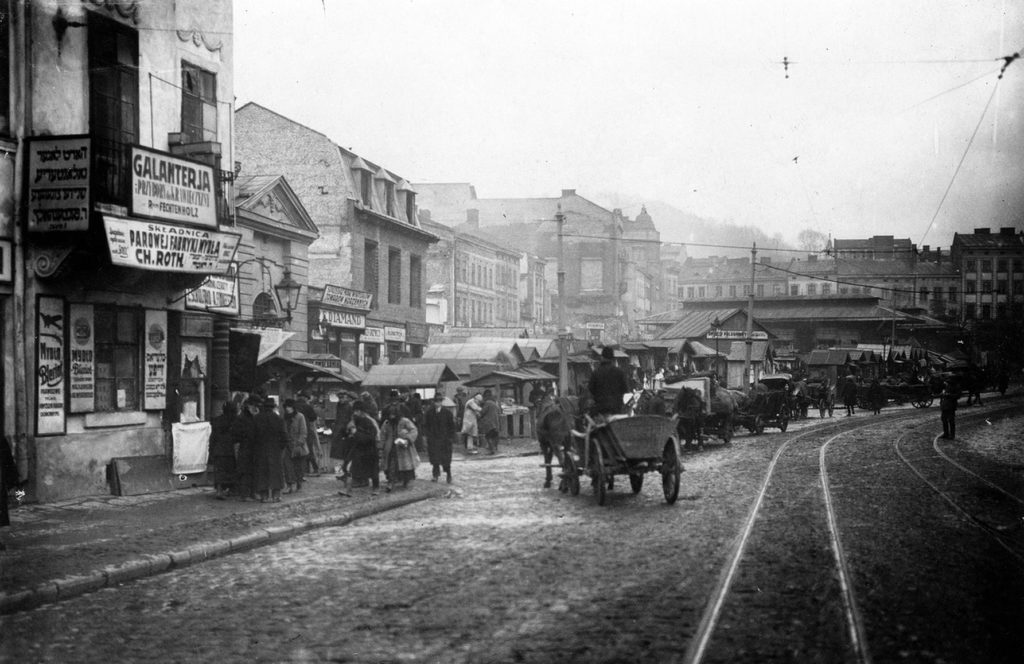
Finally, assimilation took its inevitable toll on the development not only of Yiddish theatre but of Yiddish culture in general in Galicia. During the first decades of Habsburg rule a vigorous policy of Germanization was imposed on Galician Jews but eventually dropped after a few decades. Nevertheless, the Habsburg authorities were unbending in their refusal to grant Yiddish the status of one of the official languages of the Empire. Toward the end of the nineteenth century Polish began to compete successfully with German as the language adopted by middle class Jews who were beginning to assimilate in ever increasing numbers. There are indications that due to the heavy influence of German in Lemberg and Galicia (German was the official language of the Empire and the lure of German culture hard to resist), the Yiddish spoken by the more educated elements of Jewish society was heavily Germanised and regarded by Polish and Russian Jews as inauthentic. The use on the Yiddish stage of this Germanised Yiddish, referred to as daytshmerish, will be a topic that continually crops up in the following pages.
The complexity of the situation in Galicia was reflected in the diverse physical makeup of Lemberg itself. Viewed from its surrounding hills, the city, crammed with some of the finest Gothic, Baroque and Roccoco architecture to be found in central Europe, bore a distinct resemblance to Salzburg, a Salzburg peppered with synagogues and Hasidic shtiblekh [small prayer houses]. Grand boulevards that would not have disgraced Vienna or any other central European metropolis ran within a stone’s throw of narrow alleyways lined with rotting hovels, while Ruthenian peasant carts shedding their loads of hay rumbled past ornate, Viennese-style coffee houses. Polish, Ukrainian and Yiddish could be heard everywhere, the dominant language varying from one district to another. A stroll up the Wały Hetmańskie, the main thoroughfare, would initially be accompanied by the Polish of elegant army officers and their families taking their daily promenade, but further north, approaching the Opera House, Yiddish would be heard with increasing frequency and on arriving at the top of the boulevard, on the threshhold of the Jewish district, the plaintive cry of ‘handl, handl’ issued from very street corner as wraith-like Jewish luftmentshn plied their cryptic trade. Squalor and elegance, Germanic order and Slavic informality, almost every nationality and religion that could be found in central and eastern Europe nestled cheek-by-jowl in an uneasy alliance that would finally be tested to the limit.
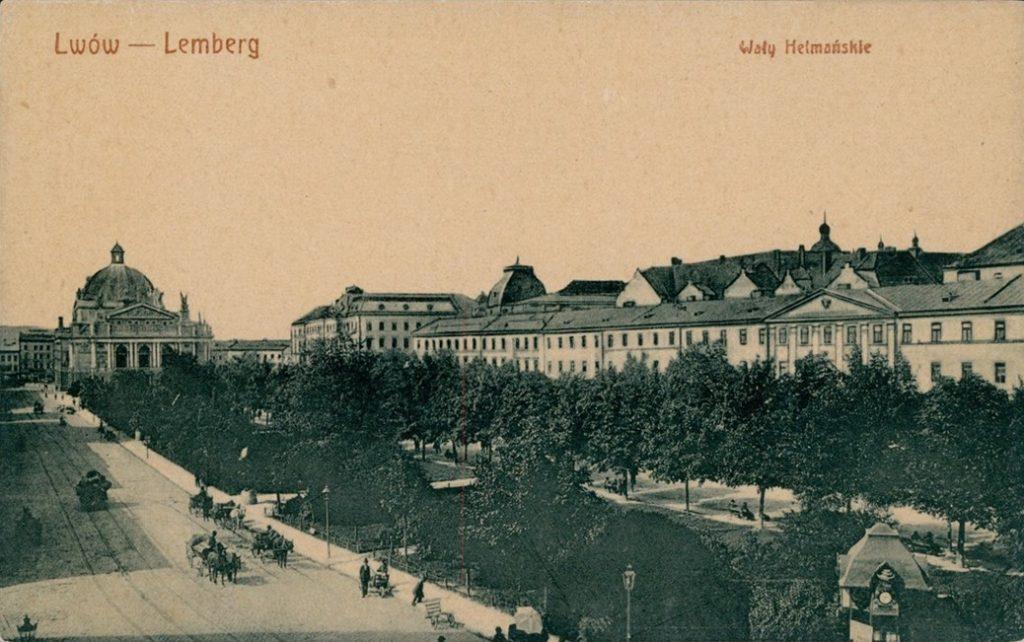
Given the forces ranged against Yiddish and the intensity of the battle they waged against it, it is clear that what at first glance seemed the most favourable circumstances for the development of Yiddish theatre in Galicia formed on the contrary a particularly hostile environment. In fact it is almost a miracle that a Yiddish theatre ever got off the ground in Lemberg, let alone went on to become an institution that in terms of longevity and continuity of existence was to have no rivals in Europe or the USA. How this was achieved will, at least in part, be related in what follows.
From its beginnings to the First World War
The very early years
Prior to the founding of Gimpel’s theatre in the late 1880’s there was no permanent Jewish theatre in Lemberg. In the absence of a permanent home, theatrical entertainment in Lemberg was provided by Broder singers such as Khone Strudler, Yoel der Matseyve-Shleger, the Herman brothers, Yoysef Vaynsthok and others. With little at their disposal other than makeshift stages consisting of just a few planks or a table-top they would perform in garden restaurants such as that run by Yasha Hand or in wine-cellars and taverns such as the Bombach on the corner of Kazimierzowska and Rzeźnicka in the heart of the Jewish quarter (a venue much favoured by Khaim Bendl and his zing-shpil teater). Due to such physical restrictions, their repertoire was necessarily limited to songs and sketches and similar straightforward pieces. There were also various amateur dramatic groups that would hire out private rooms and put on productions of plays such as Fontsye di kneytllegerin [Fontsye the Wick Maker] and Shmendriks khasene [Shmendrik’s Wedding]. In such productions the female parts were taken by men.
Finally Jakob-Ber Gimpel took it upon himself to set up in Lemberg a permanent Jewish theatre. Whether this was entirely his idea is open to some doubt as Prizament talks of ‘a group of Jews in Lemberg’ who decided to create a theatre along the lines of Goldfadn’s theatre in Iași, Romania. Admittedly, after this statement he talks exclusively of Gimpel and there can be no doubt that at the very least he was the driving force behind the whole project.
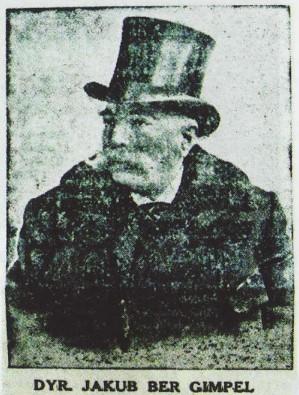
Despite threats of violence from many religious groups, bitter opposition from the Lemberg kehilla and the usual reluctance of the Austrian authorities to allow any kind of Jewish theatrical activity, Gimpel finally prevailed. In this he was aided by his long years of service as a member of the chorus at the Polish Municipal Opera in Lemberg (though in her book Vagabond Stars Nahma Sandrow describes him as a part-time sign painter). His long tenure at this officially approved institution appears to have persuaded the authorities of his legitimacy and they finally granted him a license to operate a permanent Jewish theatre. He was not, however, given a free hand to do as he wished.
Under the terms of the licence he was allowed to stage only ‘one-act plays, farces, song concerts, operettas and plays with a pronounced folk character performed in the Jewish jargon’. Such restrictions were not peculiar to Lemberg but standard practice throughout the Austro-Hungarian Empire. As Nahma Sandrow notes, referring to conditions at the turn of the century: ‘In Vienna, for example, a German Yiddish was permissible for performances, provided that the show was not a drama but strictly variety vaudeville, so plays had to be chopped up every five minutes by songs, dances, or acrobatics, and act curtains were out of the question.’
If this was the norm, then the prevalence of shund should not be attributed wholly, as is often implied, to some kind of moral or aesthetic shortcomings on the part of Yiddish playwrights, nor to the grasping nature of theatre impresarios eager to fill seats by pandering to the vulgar tastes of ‘the common people’. It is tragic that popular Yiddish theatre has acquired this reputation as irredeemably vulgar. It is, after all, inconceivable that the American, British and French music hall tradition should be subject to such severe moral censure and it is perhaps time that shund is treasured for what it was, rather than vilified for not being what its critics wanted it to be.
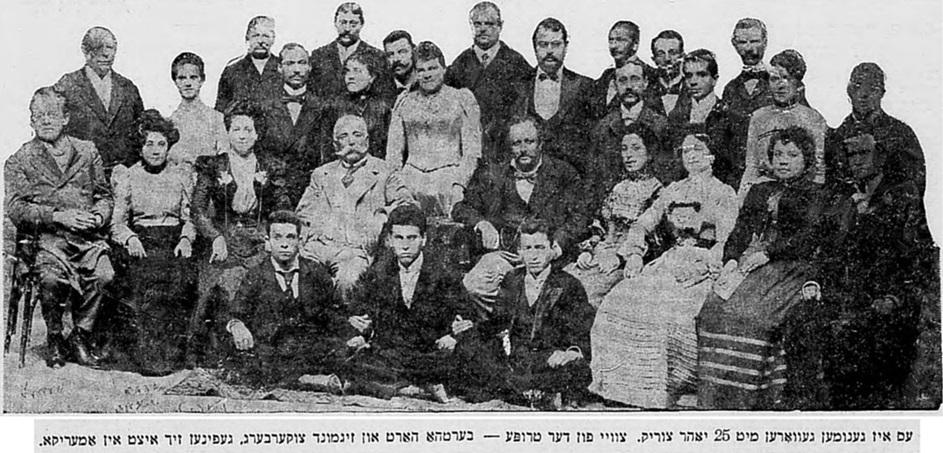
The search for premises
It took Jakob-Ber Gimpel some time to find premises suitable for his intended productions, but he finally found a fairly large hall in an iron foundry on Breite Gasse (later ulica Gródecka) and in 1889 opened Lemberg’s first permanent Jewish theatre.
Two years later Gimpel moved the theatre to the Zur Elster tavern [Polish Pod Sroką] on Franz-Joseph-Gasse at the foot of the Zamek Wysoki [Castle Mount] where it stayed for a period I have not been able to determine. Gimpel then moved the theatre once more to premises at 11 ul. Jagiellońska where it was to remain for the next 40 years or so. These were the premises occupied by the theatre when the gramophone recordings dealt with in this article were made. According to Karner, the move to the premises at 11 Jagiellońska was made towards the end of the 1890s.
All we can say with certainty is that by 1889 Jakob-Ber Gimpel was running Lemberg’s first permanent Jewish theatre. He had originally intended to call it the polnish-yidish teater [Polish-Jewish Theatre], but following protests from certain Polish circles he changed the name to the daytsh-yidish teater [German-Jewish Theatre].
The theatre at 11 Jagiellońska
We are fortunate in having three detailed descriptions of the theatre at 11 Jagiellońska written by Jakob Mestel, Yisroel Ashendorf and Vili Goldshteyn and it would be a pity not to use this opportunity to quote them in full. Mestel writes:
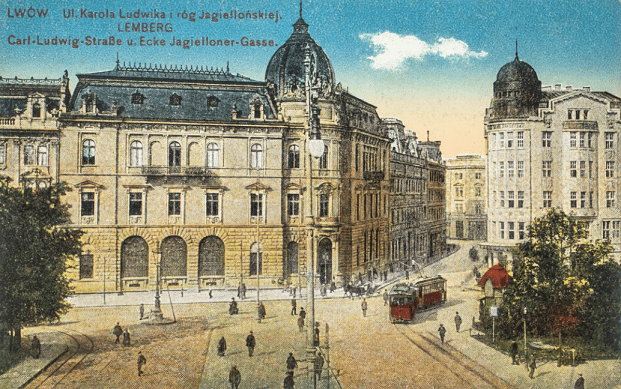
“The little theatre was situated in the courtyard of 11 Jagellonengasse, an old building that, together with its gallery, could hold around 600 people. This is where shows were staged in the winter – the productions being just as ramshackle as the building itself. In the summer the theatre was transferred to the courtyard which had a large garden with two or three trees, but not a blade of grass nor a flower in sight. A theatre of sorts was erected here fashioned out of planks of wood and with long, bare benches for the public to sit on. There were three classes of seats: first class – benches provided with a narrow backrest; second class – benches without any kind of backrest; third class – a series of planks cobbled together to form a kind of terrace twelve to fifteen rows high. At the front there were ‘boxes’ – half a dozen wooden benches fenced off by a barrier consisting of three poles. On both sides of the seating area there were standing places. Entry tickets cost from 50 hellers up to about 3 crowns. The people who lived in the houses surrounding the garden would sit at their windows or up on the roof and watch the performances for free.

In the summer ‘American guests’ would visit the garden and for a box-office hit (when Boris Tomashevski, Zigmunt Faynman or Moris Moshkovitsh were on tour) more than two thousand spectators could be packed into the courtyard. The only problem was when it began to rain. The courtyard had no roof and as soon as it began to rain, the audience would interrupt the performance and rush into the winter building and in the surge for seats blows were often exchanged. They were packed in like sardines and those unable to fight their way in had to have their money reimbursed. Meanwhile the poor actors in full makeup would be hauling their costumes over to the small winter building, while the stage-hands dragged the scenery from one stage onto the next. And so, amidst much turmoil, the performance would resume.”
Ashendorf’s description reads: “Gimpel’s Jewish theatre was situated not far from the Polish Teatr Wielki, but what a world of difference there was between the two theatres! Whereas the Polish theatre stood in the centre of an open square, it was more or less impossible to see the Jewish theatre from the street as it was situated in a courtyard. Furthermore, the building housed a restaurant and the smells from its kitchen used to waft from the courtyard right into the theatre, while the din made by the kitchen’s dustbins could often be heard.”
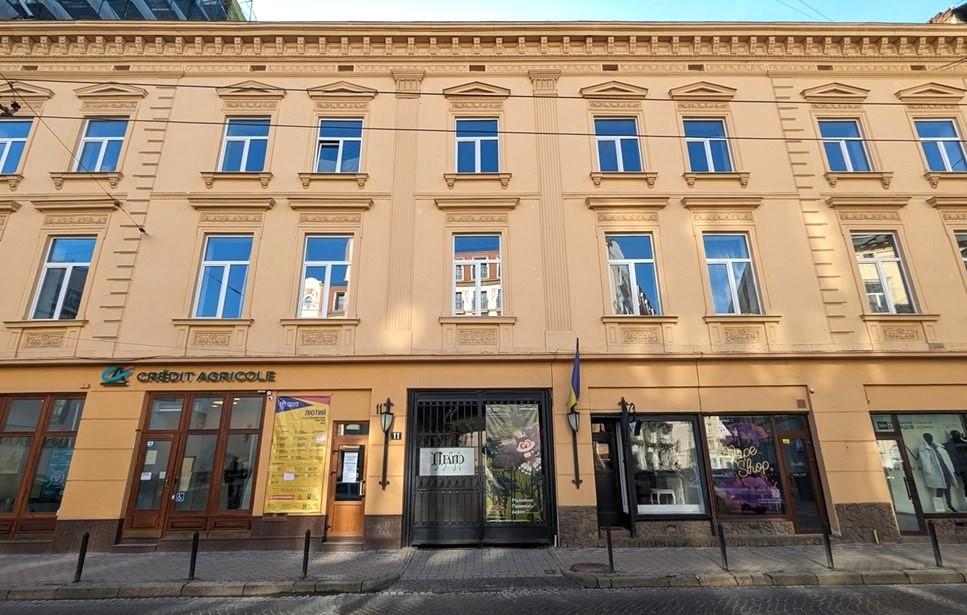
According to Goldshteyn: “Gimpel’s theatre [in 1917] was housed in a ramshackle old building in a large courtyard where two or three very high piles of rubbish chucked out daily by the big Fliser restaurant were constantly on display. The entry to the theatre was unassuming and unless you were a Lemberger you would never imagine that there was a theatre in the building. You would often see provincials wandering around, the men bearded, the women wearing their sheytls. Having arrived in Lemberg and wanting to relax a little and visit the theatre they would drift up and down in front of the building, looking this way and that, never suspecting that deep in the recesses of the courtyard lay the theatre they were looking for.
In order to reach the theatre you had to go up a slope into the courtyard. The head janitor, who also acted as an usherette, was an old woman who people used to call ‘di gedalyekhe‘ [equivalent perhaps to something like ‘Lady Gedaliah’]. Woe betide anyone she led to their row and showed to their seat and who then failed to give her a tip . . . She would unleash a torrent of abuse on a par with anything to be heard on the square behind the synagogue. ‘Di gedalyekhe‘ was a well-known Lemberg character.”

The repertoire
Until such time as a detailed chronology of the theatre’s productions for the period 1889 to 1914 is made available, any comments regarding the repertoire has to rely on scattered references in secondary sources.
According to Prizament the repertoire consisted of Avrom Goldfadn’s Sulamis [Sulamith]; Bar Kokhba [Bar Kochba]; Rabi Yoselzon [Rabbi Yoselzon]; Kuni Lemel; Meshiakhs tsaytn [The Messianic Age]; Akeidas Yitskhok [The Sacrifice of Isaac] and later on plays by Latayner, Hurvits, Shaykevitsh and others. To this list Turkov adds Goldfadn’s Yehudit Holofernes [Judith Holofernes]; Rikhter’s Kheyrem Rabinu Gershom [The Curse of Rabbi Gershom]; Hertsele Meyukhes [Hertsele the Noble] and an unattributed play by the name of Shmate-kloyber [Ragpickers]. Karner mentions Esra der ewige Jude [Ezra the Eternal Jew]; Die Schlechte Frau [The Bad Woman] and Tomashevski’s Dus Pintele Jüd [The Quintessential Jew].
Many of these plays were imported from America and then heavily abridged.
All of which more or less bears out the general perception of Gimpel’s Theatre as being basically a source of shund productions. Speaking of Jakob-Ber Gimpel, Turkov says: “He had no time for the serious theatre, i.e. performances that did not include song and dance. Actors who could not sing, that is, dramatic actors, were in his eyes “reciters” and he had little time for them.”
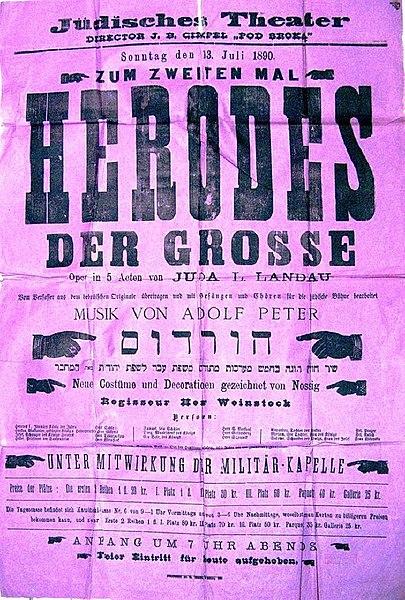
Inevitably such a repertoire was not acceptable to the local intelligentsia and the following passage by Dr J. Tenenboym, referring to the period around 1909, would seem typical: “The Yiddish theatre in Lemberg, Gimpel’s theatre, which advertised ‘Tragedies with music, dance and song’, did not hold back from putting shund theatre on stage and was unable to satisfy the intelligent public. On the contrary it cheapened its repertoire in order to appeal to the common people.”
Shund, however, was not the sole fare offered to the public and some effort was made to stage more serious pieces such as Hamlet (starring Yozef Kesler [Joseph Kessler]on tour from London); Schiller’s Die Räuber and Maeterlinck’s Monna Vanna. It always has to be borne in mind that government restrictions on what could be performed may still have been dictating to a great extent the nature of the theatre’s repertoire, even as late as the decade preceding the First World War. Whether this was the case or not needs to be the subject of more detailed research than I have been able to undertake.
The language used on stage
So far I have consistently referred to Gimpel’s theatre as a ‘Jewish’ and not as a ‘Yiddish’ theatre. There is a reason for this. During the early years Yiddish was banned from the stage and all productions were performed in German – at least so it would seem. This was not, as might be expected, at the behest of the Austrian authorities, but at the insistence of Jakob-Ber Gimpel himself. Both Prizament and Turkov agree that this was the situation but, as we shall see later on, give different accounts as to how the transition was eventually made from German to Yiddish.
Gimpel himself was a mass of contradictions. He is recalled as a tall, imposing, magnificently mustachioed figure with the physique and demeanour of a member of the Polish gentry (his photographs reveal a more than passing resemblance to Sir Edward Elgar). Nevertheless, his stately exterior concealed a mercurial temperament given to far-flung flights of fancy and a love of tall tales that he would relate with relish and at times obviously start to believe in himself.
As regards his aversion to Yiddish, here is what Turkov says: “His love of the Jewish theatre was also markedly idiosyncratic. He could not speak a single word of Yiddish and spoke only German [my italics]. If any of his actors in the theatre spoke any Yiddish on stage, he would make sure it did not happen again.
— On the stage — he once said — you must speak in a solemn, elevated language and not the way “gemeine Leute” [German: common people] talk among themselves . . . If you are going to speak “jargon” on stage, then in what way are you different from the “Bretel-singers?” (by which he meant the Broder singers and the folk singers).”
So adamant was he in his refusal to let Yiddish anywhere near his theatre that in recruiting the actors and actresses for his company he turned his back on the one obvious source readily at his disposal, that group of talented and already popular Yiddish-speaking entertainers known as Broder singers referred to earlier in this article. The only exception he made to this rule was when he hired Yoysef Vaynshtok.
Yiddish did, however, finally prevail on the stage of Gimpel’s theatre, but it is not at all clear how and when this came about. According to Turkov it was the playwright Moyshe Rikhter who brought about the change, whereas Prizament claims that the main person responsible for this shift in policy was the actor Bentsion Palepade. Here are the two very different accounts of this development.
First, Turkov’s version of events: “In 1897 Moyshe Rikhter also made his debut as a writer for Jakob-Ber Gimpel, producing Kheyrem Rabinu Gershom and then Hertsele meyukhes.
Hertsele meyukhes was the first play at the Lemberg Jewish Theatre to deal with a social problem and, as such, appealed to the taste of the theatre-going public of the time. Moyshe Rikhter, incidentally, started a linguistic revolution at the Lemberg Jewish Theatre. The heroes of his plays spoke Yiddish and despite protests from old Gimpel that this was upsetting him and would drive the audiences away, Moyshe Rikhter resolutely refused to have the plays put on in any other way. Since the play was a great success with the public, with the theatre full to overflowing every evening, Jakob-Ber Gimpel was later forced to admit, that it was only once Yiddish began to be spoken on the stage of his Jewish Theatre that . . . [sic]”
Prizament’s account reads: “B. Polepade [sic], a serious actor from Russia, put on several productions (operettas) at Gimpel’s theatre. Polepade was the first in Lemberg to let Yiddish be heard spoken on the stage of the Yiddish theatre and the following incident from that historic episode is worth recounting. Polepade had set his mind on breaking once and for all with the awkward tradition of German on the Yiddish stage. In the two productions he put on there (Isha Ra [The Bad Woman] and Kol Nidre) he decided that, unlike the other actors, he would speak Yiddish. All the actors carried on speaking German as usual and those taking part in the production mocked Polepade. — “General Abner (from Isha Ra) is going to speak jargon,” they laughed, “just like they do behind the synagogue in Lemberg?! . . . And what about Paulus, the grand inquisitor, will he be speaking jargon too?” . . .
But the audience in the hall was obviously of a different opinion and the innovation was received with enthusiasm. And so, soon after this the other actors had to start speaking Yiddish on the Jewish stage in Lemberg.”
Prizament gives no date for this incident, but reference to the original passage in Palepade’s memoirs reveals that it occurred either in 1908 or some time shortly thereafter.
When considering these accounts, including Turkov’s and Prizament’s description of Jakob-Ber Gimpel’s linguistic preferences, some attention needs to be given to the terminology used. Both writers, for example, claim that Gimpel spoke only German. The Yiddish word they use for German is daytsh. Perhaps what they mean is daytshmerish, a heavily Germanised form of Yiddish that was frequently employed on the popular Yiddish stage. On the other hand, Turkov a few pages later uses daytshmerish to refer precisely to that variant of stage Yiddish, which would indicate that he did differentiate between the two terms. To complicate matters further, the entry for Polipade [sic] in Volume III of Zylbercweig’s Leksikon fun yidishn teater quotes at length Palepade’s own account of the incident related by Prizament and then Jakob Mestel adds his comments on the text. Both Palepade and Mestel use the term daytsh but in such a way that, to me at least, it seems to mean daytshmerish. Furthermore, in Turkov’s article there is a long account, too long unfortunately to be included here, describing the furore surrounding Yozef Kesler’s performance of Hamlet. At the start of this account, Turkov relates how news got round that Kesler intended giving his performance in daytshmerish and how a vociferous movement instigated by students from Czernowitz quickly arose demanding that he speak in “pure Yiddish”. Nevertheless, as soon as he starts to describe the actual performance, which Kesler refused to deliver in “pure Yiddish”, Turkov uses the term daytsh to describe the language Kesler used. In this context daytsh must surely mean daytshmerish. Clearly, then, in the various texts we are dealing with here daytsh can mean either ‘German’ or daytshmerish. The problem is that it is not always clear which meaning is intended.
This is not a subject I intend to pursue any further in this article, but it is certainly a topic that warrants further investigation. Having said that, it is impossible to avoid making one final observation. During the course of his essay Turkov makes the following intriguing comment when describing the situation around about the turn of the century:
“However, once almost everyone had left Gimpel and gone to America, Moyshe Shor, as the only one in the new troupe who could read Yiddish [my italics], became the theatre’s prompter, and it was around this time that he began to write plays.”
If these new members of the troupe could not read Yiddish, does that mean that they were not native Yiddish speakers and had to learn it specifically for the stage, or does it mean that they could speak Yiddish, but were illiterate? Whatever the answer, it raises all kinds of intriguing further questions.
The members of the company
Gimpel’s troupe initially consisted of Regina Prager and Frida Geshpas [Frieda Gespass], both of whom Gimpel recruited from the ranks of the Polish Municipal Opera where he himself had sung for so many years. In addition Gimpel engaged Yoysef Vaynshtok [Josef Weinstock], Zelig Shor [Selig Schorr] (the father of Moyshe and Shloyme Shor), Berta Kalish [Bertha Kalisch], Kalmen Juvelier [Kalmen Juwelier], Samuel Tabatshnikov (Tobias) [Samuel Tabatschnikow], Berl Bernshteyn [Berl Bernstein], Bernard and Meri Vilenski [Bernard and Mary Wilenski] and Filip Vayzenfreynd [Philip Weisenfreund] (Paul Muni’s father). In its early years the theatre’s director was Luis Tsvibel [Louis Zwiebel], but its very earliest productions were staged by Avrom Goldfadn himself.
These performers were later joined by the dramatic actors Berta Fishler [Bertha Fischler], Z. Karlik and the soubrette Lina Karlik [also referred to as Libe Karlik]. From Romania came the actor Yozef Rozenberg [Josef Rosenberg] and his wife Sara (Prizament refers to her as ‘Libe Rozenberg’). Although deaf in both ears, Yozef Rozenberg was a talented actor. Despite his disability, all he needed was a sign from the prompter for him to seize his cue and start talking without a moment’s hesitation.

Following the move to 11 Jagiellońska some time in the late 1890s, a new wave of actors and actresses joined the company: the actor-director Yulius Gutman [Julius Guttmann] and his wife Saltshe [Salcia Guttmann], the actor and singer Adolf Meltser [Adolf Melzer], his wife Hania Bri [Anna Brüh], Sam and Roza Shiling [Rosa Schilling], Bentsion Palepade, Leon Kalish [Leon Kalisch] and others.
In the period following the death of Jakob-Ber Gimpel in 1906, the company engaged the singer S. Tsukerberg [S. Zuckerberg]; the prima donna, Regina Tsukerberg [Regina Zuckerberg]; the prompter and playwright, Berl Hart, later director of a troupe in the Galician provinces; the actor, Norbert Glimer who later also became a licensed theatre director in the Galician provinces; Stefi Glimer, Khaim Matyas Thur [J. M. Thur]; Shloyme Shor; Yankev Prizament [J. Prisament] who also worked as prompter and translator; Yankev Fuks [Jacob Fuchs] and his wife Ruzha (the parents of the talented actor Leon Fuks [Leo Fuchs] who began acting in the Lemberg theatre even as a child under the name of Laybele Springer); the actor, Kalmen-Moyshe Ebel; Frenkel; Zalmen Libgold; Maks Shtreng [Max Streng]; Shnek [Shneck]; Shpatser; Yozef Shengold; Elke Darf and Ludvig Zats [Ludwig Satz].
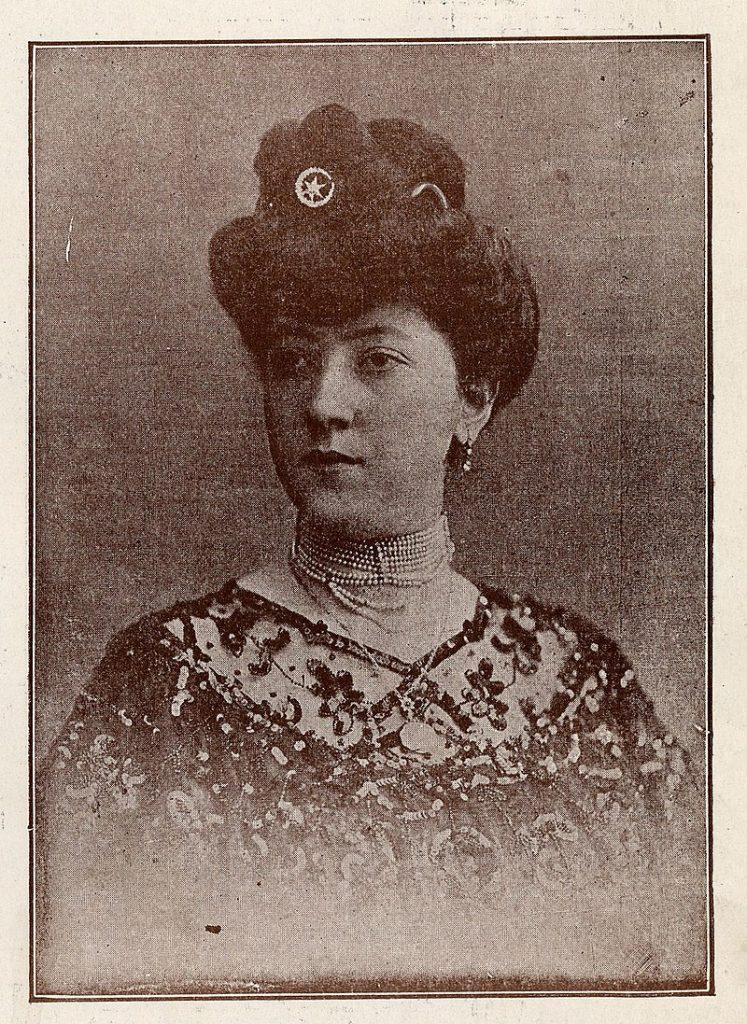
The composition of the company was, however, in a constant state of flux. Actors and actresses joined and left and then later returned almost, it sometimes seems, as the mood took them.
Many of the actors and actresses noted above sooner or later left for America where they became some of the most famousstars of the American Yiddish theatre. Frida Geshpas, the elder sister of Helene Geshpas, married Luis Tsvibel at age nineteen and then left with him for America in 1894. She was later to perform and record under the name of Frieda Zwiebel or, following the early death of Louis and her subsequent marriage to Leyzer Goldstein, Frieda Zwiebel-Goldstein. One year later, in 1895, she was followed by Regina Prager who was generally acknowledged to have had one of the finest voices ever to grace the stage of the Yiddish theatre in America. Berta Kalish left for New York in 1896 and established herself as one of the dominant figures on the Yiddish stage. In 1900 Kalmen Juvelier left for America with Hurvits’ troupe, while Ludwig Satz emigrated in 1914 to become one of America’s most popular stars of both the Yiddish film and stage. Regina Zuckerberg appears to have left for America in the early 1920s and Leo Fuchs, it would seem, in the mid-1930s and in America became one of the most loved of Yiddish comic actors. In addition to their careers on stage and screen, all these artists made a considerable number of gramophone recordings in the USA.
This was not one-way traffic, however, as the theatre also played host to a large number of Yiddish actors and actresses from abroad. From America came Boris Tomashevski, Nakhman Mayzel and Moris Moshkovitsh, from England Yozef Kesler, Moris Vakhsman and Dina Faynman, to mention but a few.
The theatre did not limit its activities to Lemberg alone. Parts of the company frequently went on tour throughout Galicia and for a while were regular guests as far afield as Vienna, Berlin, Prague and Czernowitz. In Vienna they appeared under the name Die Polnischen, in Prague as Deutsch-jüdisches Theater aus Lemberg and in Berlin as the exotic-sounding Orientalische Operettengesellschaft.
The death of Jakob Ber Gimpel and the succession of Adolf and Emil
In 1906 Jakob-Ber Gimpel died aged 65 or 66, whereupon management of the theatre passed to his sons, 31 year old Adolf and 38 year old Emil. Both sons lacked the flamboyance of their larger-than-life father. Adolf was very much, it would seem, the dedicated musician with little interest in the practicalities of running a theatre, and Emil basically a shrewd and sober-minded businessman. Emil assumed total control over the theatre and employed his younger brother as music director. According to Turkov, relations between the two were strained, to the extent that from this point on they never talked to each other for the rest of their lives. Turkov maintains that the source of this rift was Emil’s assumption of control, on the death of their father, of all the assets belonging to the theatre other than the sheet music which fell to Adolf. Thereafter, presumably as a token act of protest, Adolf charged a fee every time the theatre needed to use the scores.
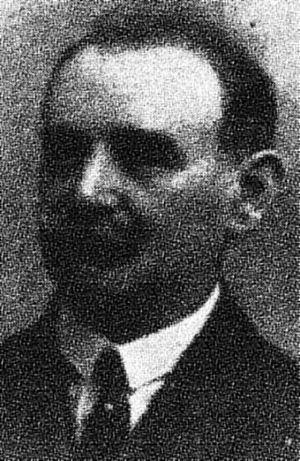
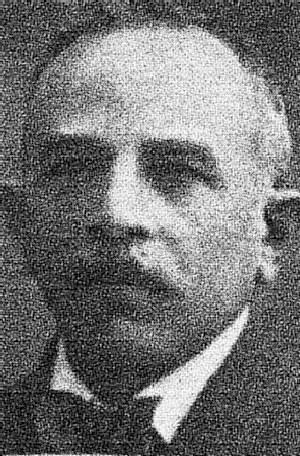
Adolf, who had started his career playing the clarinet in the Polish Opera, had a reputation as fine musician and chorus-master and a magnificent orchestrator. Apart from his activity in the theatre, his life was dedicated to his three highly talented sons – Bronisław, a concert violinist, Jakob (Kuba) a concert pianist and Karol, a concert pianist and conductor.
Under Emil’s management the theatre entered into the period of its greatest financial success and Emil became a rich man. Adolf, however, lived in modest circumstances throughout his life.
Under the joint regime of the two brothers the essential character of the theatre does not appear to have undergone any significant change during the period from the death of their father up to the outbreak of the First World War. The sole real change, but not one that really would have altered the general style of the theatre, was Emil’s decision to put an end to the company going on tour. It is perhaps worth mentioning that if it is true that after 1906 the company never toured again, then the Yiddish troupe from Lemberg whose appearances in Prague so enthralled Kafka and which went by the name of the Deutsch-Jüdische Theatergesellschaft was definitely not one of the Gimpel troupes. Nevertheless, bearing in mind that a large number of the actors and actresses who belonged to Gimpel’stheatre frequently left temporarily in order to go on tour with other companies, it is quite possible that some members of this Lemberg troupe were former members of the theatre. Furthermore, it seems safe to say that what Kafka saw and heard in Prague would have been very similar to what he would have experienced at Gimpel’s theatre in Lemberg and that when we listen to the gramophone recordings made in Lemberg by members of Gimpel’s theatre, we are listening very much to what Kafka would have heard in Prague at around the same time the recordings were being made.
The war years 1914 – 1918
Within weeks of the outbreak of the First World War the Russians broke through the Austrian lines and occupied Lemberg on 3 September 1914. Almost immediately the Yiddish theatre was banned – at least that is what it seems natural to assume in the light of Prizament’s statement that Emil Gimpel asked Sheremetiev, the city’s Russian governor, for permission to reopen the theatre. The request was refused and for the next 9 months the theatre was closed until on 9 June 1915 Lemberg was recaptured by the Austrians. Gimpel’s theatre then reopened and new period of intense activity commenced.
As a result of the Russian invasion of Eastern Galicia, Lemberg’s Jewish population had been swollen by the arrival of a mass of refugees who were unwilling to return to the countryside even once the city and the surrounding territory had been recaptured by the Austrians. In addition, the city now contained a large number of German-speaking soldiers in search of entertainment for whom Yiddish was far more accessible than Polish or Ukrainian. Consequently, the theatre could now fill its seats from these two new pools of potential customers. According to Prizament, one consequence of this was that, in order to attract the German-speaking military, the company began to slide back once more into using the more readily comprehensible daytshmerish as the standard language employed on stage.
During the war, new members joined the theatre: Shame Gedale Urikh, his wife Tsilli and their daughter Pepi Urikh. Yeti Hokhberg, Ana Reys, Yitskhok Mestel (a brother of Jakob Mestel), Roza Kalb, Yankev and Rokhl Reles, Motl Has, Gershon Rot, Volf Merkur, Genira Gelber, M. Gelber, Malvina Yoles (later to become Emil Gimpel’s daughter-in-law), Yitskhok Valdberg and the comedian Asher Griminger.
With the defeat of Germany and Austria-Hungary in November 1918, Lemberg was engulfed in chaos. On 1 November 1918 a Western Ukrainian People’s Republic was proclaimed covering much of Eastern Galicia including Lemberg. Armed Jewish militias were formed, but it would seem that they were intended more as a self-defence force than actively to help the Ukrainians in the coming battle with the approaching Polish army. On the whole the Jewish position would seem to have been one of cautious neutrality. Whatever the reason for the formation of the militias, part of Lemberg fell under their control. One of the boundaries delimiting the area of Lemberg in which these Jewish militias were to operate actually ran along Jagiellońska. On 22 November the Polish army under General Józef Haller took the city. Convinced that the city’s Jewish population had actively sided with the Ukrainians, part of the army unleashed a three-day pogrom in the course of which 72 Jews were murdered, 443 seriously wounded and over 5,000 had their property looted. At least those are the figures compiled by the Jewish Relief Committee in January 1919. The true figures may have been far higher. For example, in its edition of 29 November 1918 the Austrian newspaper Die Wahrheit put the number of dead at 600. In addition to many other cases of arson against Jewish premises, Lemberg’s 400 year old wooden synagogue was burned to the ground. Those responsible were, apparently, eventually brought to trial.
During this period of upheaval Emil Gimpel took his company to Przemysł for safety where they performed until the Polish-Ukrainian conflict was over.
The inter-war years
On their return to Lemberg, now Polish Lwów, Gimpel and company reopened the theatre with a performance of Goldfadn’s Meshiakhs tsaytn starring Leon Kalish.
When it comes to relating what happened during the subsequent 21 years, we are confronted with a major problem. While we have quite good information as to the general course the theatre took and the changes it underwent, there is a chronic lack of dates and it is almost impossible to say when any of the events described took place. Consequently, establishing a reliable chronology is at the moment out of the question and the sequence of events set out in what follows is based very much on informed guesswork.
In summary, the main developments of the inter-war years consisted of a major change in repertoire, the adoption of a more language-conscious policy marked by the championing of so-called ‘pure Yiddish’, an increased use of touring companies, the opening of a second theatre running concurrently with the old Jagiellońska theatre, a change in management and, at the end of the 1930s, the construction of a brand-new, custom-built theatre. Also, at some unstated time Emil Gimpel changed the official name of the theatre from the Yidish-daytsh teater [sic] to the Yidish teater.
The change in repertoire
Hitherto Gimpel’s theatre had been the dominant force in the Yiddish theatre scene in what was once Austro-Hungarian Lemberg, now Polish Lwów. Located in the north-eastern corner of the Austro-Hungarian Empire, it had led a fairly sheltered existence, cut off from the activities of the many Yiddish theatres that had sprung up all over Russian-occupied Poland following the 1905 revolution and the Russian government’s subsequently more relaxed attitude towards Yiddish theatre (it is often claimed that in 1883 Yiddish theatre was banned in Russia and that this ban was lifted in 1905 – I have never come across the slightest evidence for such a ban nor its rescindment, only indications that many obstacles were put in the way of Yiddish theatre, obstacles that continued to be imposed after 1905 but on a lesser scale). Now that it was part of the new, greater, post-war Poland, Gimpel’s theatre was exposed to competition from these new companies that were now operating all over the country. They began to visit Lwów in increasing numbers and Gimpel’s theatre began to suffer as a result. Indeed, according to Prizament, the theatre was eventually forced to shut down. Unfortunately there is no indication at all as to when this happened, but it was probably during the late 1920s.
What happened at the theatre between 1918 and this undetermined date is difficult to ascertain.
According to Prizament: “Guest artists began to appear. From America came Molly Picon and Jacob Kalich who performed to great acclaim; later on — Boris Thomashefsky together with Regina Zuckerberg. The Vilner Trupe made a great impression with their production of Der dorfs-yungl [The Village Boy], Di puste kretshme [The Deserted Inn], Der dibuk [The Dybuk], Tog un nakht [Day and Night] and other plays. The “Vilners” opened up new paths for the Lemberg theatre.
A while later the VYKT [Varshever yidisher kunst teater (Warsaw Yiddish Art Theatre)] came to Lemberg, headed by Zigmunt Turkov and Ida Kaminska, and created a sensation with their magnificent productions.
Performances given by Yonas Turkov and Dina Blumenfeld were similarly successful. Moyshe Lipman’s troupe later came to Lemberg as did Lidia Pototska’s [Potocka] and Dr Paul Baratov’s, while the Varshever reviu-teater [Warsaw Revue Theatre] from the Skala also played for a while to great acclaim. It goes without saying that Dzigan and Shumakher and their ensemble were also a great hit.
Gradually the Lemberg public became accustomed to touring productions and better performances. The local Yiddish theatre remained in the shadows and for a while ceased its activities, until Emil Gimpel’s daughter-in-law, Malvina Yoles, and her husband, Dr Maurycy Gimpel, took over the management of the theatre.”
As usual, no dates are supplied in Prizament’s account. In her autobiography Molly!, Molly Picon mentions many towns and cities she visited in Eastern Europe during her 1921–1922 tour, but she omits any reference to Lwów. Nevertheless, it seems fairly safe to assume that the visit she made to the city mentioned by Prizament took place during that period.
A change in management – Maurycy Gimpel, Malvina Yoles-Gimpel and the Colosseum Theatre
Even less satisfying than the accounts of the period from 1918 up to the undated temporary closure of the theatre are the descriptions of the opening of an additional theatre called the Colosseum. All that can be done at this point is to note the discrepancies and hope that future research will provide more detail.
The four sources that deal with this matter, Prizament, Turkov, Ashendorf and Karner all agree on two essentials – that at some stage management of Gimpel’s theatre was taken over by Emil Gimpel’s son, Maurycy, and his wife, the actress Malvina Yoles, and that the couple opened an additional theatre called the Colosseum. As regards the details, opinions vary, with Karner giving the most radically different account.
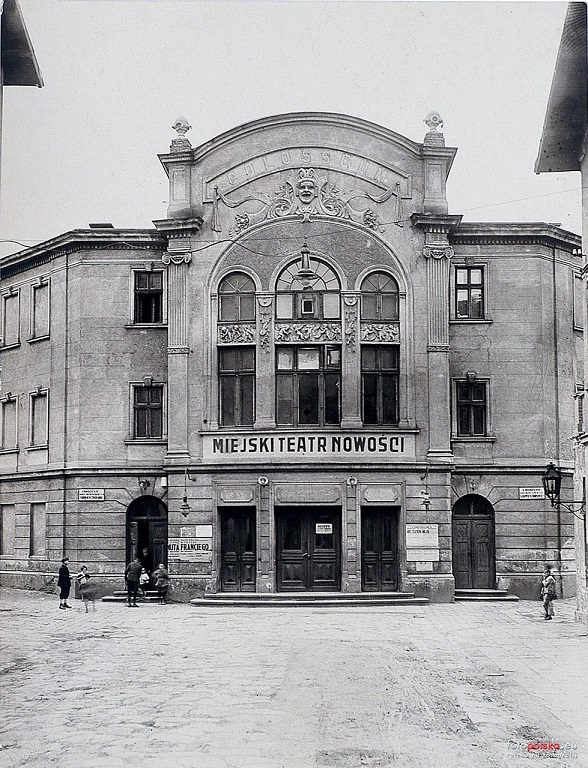
Prizament mentions that by the winter of 1932 the Colosseum theatre was being used for performances by a musical troupe organised and directed by himself.
Turkov merely states: “They [Malvina and Maurycy] also became partners in the “Colosseum” Theatre in Lemberg and as a consequence were running two Jewish theatres in the city.” As can be seen, no date or location are provided. Ashendorf goes into more detail: ” . . . In order to put on Yiddish plays, Gimpel’s son together with his wife, the artist Malvina Yoles, leased the auditorium of what was then the Colosseum which was situated in the Herman Brothers Passage [Pasaż Hermanów]. This was without doubt a step forward. The old Gimpel theatre, however, did not stop putting on productions and so Lemberg soon had two permanent Yiddish theatres. The handsome new premises were large and situated in the heart of the Jewish district. Gradually members of the intelligentsia and people from assimilated circles began to show up at performances. It would be an exaggeration to say that this was merely because of the fine new auditorium. The dark tidings emerging from Hitler’s Germany caused many who had wandered to return to the fold and no small part was played by the contribution that Zigmunt Turkov was beginning to make to the theatre. Nevertheless, one should not underestimate the powerful attraction exerted by the auditorium. Yiddish plays were still being staged there at the outbreak of the Second World War.”
At the start of his article, Turkov also states: “Apart from a few brief interruptions, he [Jakob-Ber Gimpel] and the other Gimpels continued to stage performances there [at 11 Jagiellońska], even when they were over in the big “Colosseum” theatre on Slonetshne Gas [ul. Słoneczna].”
Conflating and condensing the essential from all three accounts we are presented with the following – in 1932, or thereabouts, Maurycy Gimpel and Malvina Yoles-Gimpel hired the auditorium of the Colosseum Theatre. This was situated in the Pasaż Hermanów or on ul. Słoneczna. The Colosseum was run in tandem with the theatre at 11 Jagiellońska right up until the outbreak of the Second World War. It should be noted that there is no conflict between the two locations noted, as the Pasaó Hermanów led off from ul. Słoneczna.
Compare this summary to Karner’s account: “At the start of the 1930s Maurice [Maurycy] Gimpel had leased the Colosseum at 18 Berka Joselowicza from Theophil Burstin. Since, due to lack of public interest, Gimpel’s troupe was only putting on performances once a week, Izydor Merkel, who ran the Uciecha theatre and cinema on Sienkiewicza, applied at the end of January 1931 to be taken on as an additional subtenant at the Colosseum where he wanted to set up a theatre and cinema. In his application Merkel argued that he would not be acting as a “competitor” to Gimpel “whose public was drawn from the lower strata of the population”. Merkel planned to introduce a “high quality Yiddish theatre for the middle class and intelligentsia”. He was working on the assumption that there was only limited public interest for a sophisticated Yiddish theatre and that for economic reasons he therefore wanted to open a cinema at the same time. After lengthy negotiations, Merkel was granted permission.”
A new theatre at 11 Jagiellońska
At some time in the mid to late 1930s the Gimpels decided to replace the old theatre in the courtyard at 11 Jagiellońska with new, custom-built premises (in addition to the photos reproduced in this article, a photo of these premises can also be found in Stranitsy iz Istorii Evreiskogo Teatra v Galitsii on the page opposite the photo of Merkel’s letter referred to above). Again there are conflicting accounts, this time as to how and when the decision to move to new premises was taken.
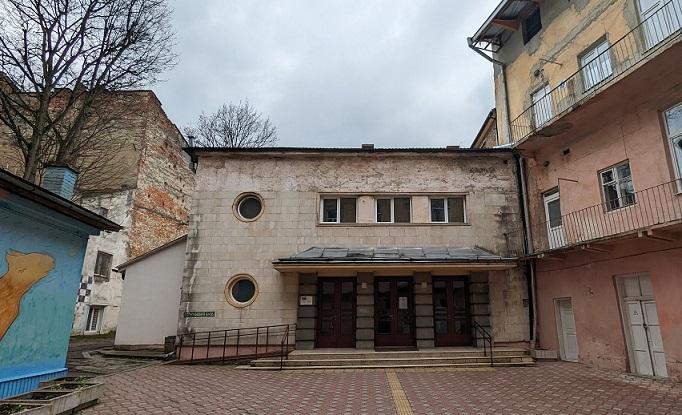
According to Turkov: “Once building work on the new “Gimpel Theatre” was finished in 1939, shortly before the outbreak of the war, Malvina Yoles engaged me as both artistic and general director of the theatre in which she was due to perform. The first play I had to put on was a musical production by Shimyon Shpund based on an historical theme.”
Prizament more or less tells the same story: “During “VYKT’s” tour [in 1938], Malvina Yoles and Emil Gimpel abandoned the old theatre at 11 Jagiellońska and built a magnificent new theatre building along modern lines which was to be the new Yiddish theatre in Lemberg. The building was finished in 1939, but Jews were destined never to set foot inside it.”
Karner, however, maintains: “Despite the difficult political and economic situation, the new theatre building on Jagiellońska was opened in 1936”. And again, in a footnote to her account of Merkel’s tenancy: “Theophil Burstin was not the owner of the Colosseum but had leased the building from the heirs of Abraham Herman and then sublet it to Maurice Gimpel until 30 September 1936. Gimpel undertook to pay Burstin until expiry of the sub-tenancy agreement; he also paid Burstin 9,500 zlotys for the fittings and covered the cost of work carried out to adapt the premises. The sub-tenancy agreement expired in 1936, the same year in which the new building for the Jewish Theatre was finished.”
I can find no way in which these two accounts can be reconciled. Either Turkov’s and Prizament’s memories failed them (they were, after all, writing decades after the event), or perhaps Karner has assumed that because the sub-tenancy agreement expired in 1936, that is the year the new theatre opened.
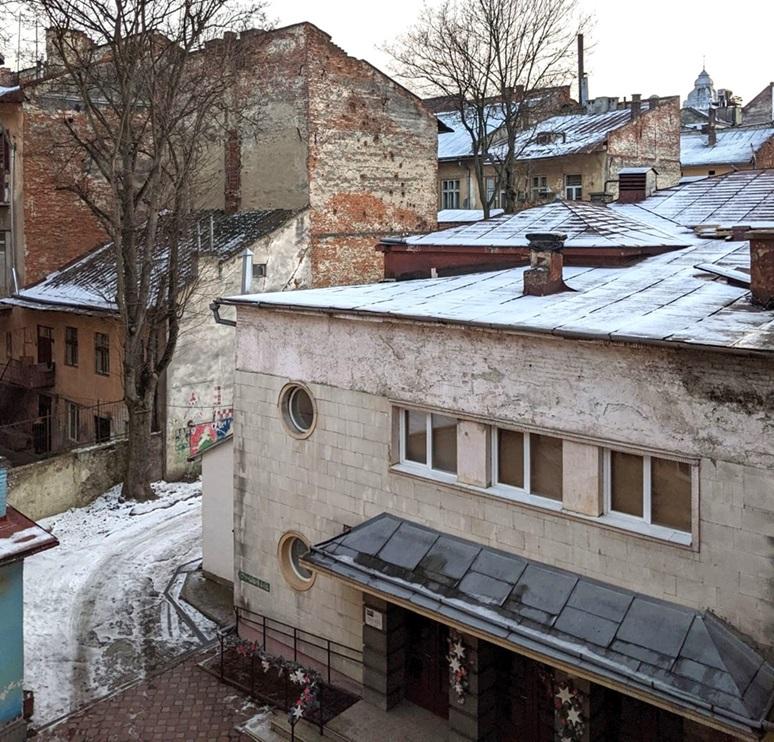
The repertoire under the regime of Maurycy Gimpel and Malvina Yoles-Gimpel
Turkov describes Malvina as the de facto manager of the theatre – presumably her husband assumed the role of financial advisor or something of the sort (according to Turkov he ran several cinemas in Lwów). Although Malvina was firmly in charge, Emil Gimpel, by now in his mid-60s, could not entirely relinquish his participation in the theatre and clung on to his habit of a lifetime – standing guard over the main entrance doors to the theatre to make sure no one slipped in without a ticket. This may not, however, have been Emil’s last bow. In the entry for Emil Gimpel in Zylbercweig, we read: “In the course of the Yiddish language revival, the theatre changed its name from Yidish-daytsh teater to Yidish teater and for a while was managed, as a ‘business’, by his [Emil’s] son Dr Maurycy Gimpel, the husband of the actress Malvina-Yoles. Subsequently, Gimpel reassumed management of the theatre.” This is the only overt reference I have come across stating that Emil Gimpel eventually regained control.
Under her regime, which appears to have begun 1930, Malvina initiated yet one more of those campaigns to reform the language used on stage and ‘improve’ the company’s repertoire that had been launched periodically ever since the days of Moyshe Rikhter in the mid-1890s. She does, however, seem to have been rather more rigorous than her predecessors. For the first time in the company’s history, actors and actresses were dismissed – a course of action that soft-hearted Jakob-Ber Gimpel and even his more sober, business-minded son, Emil, had never been prepared to countenance. These repeated attempts at reform suggest that they routinely ran out of steam, an assumption that is borne out by the following passage in Turkov-Grudberg’s Yidish teater in poyln: “In the period between the wars, almost every Yiddish actor in Poland appeared at the [Gimpel’s] theatre. Nevertheless, the theatre did not play an important role in the rise of Yiddish theatre. In its final years it was synonymous with poverty, daytshmerish and mediocrity. . . . . . . However, none of them [the troupes that travelled around Galicia and beyond] ever outgrew Gimpel’s theatre and they were distinguished by their intellectual and material poverty. These troupes, with the exception perhaps of Ebel’s troupe, employed a daytshmerish Yiddish which they trailed behind them into the final years. As a general statement it has to be said that, contrary to the contribution made by drama groups and social organisations – the contribution made by professional Yiddish theatre in Galicia to the rise of Yiddish theatre in Poland was a meagre one. Right to the end Galicia remained a breeding-ground for daytshmerish and corrupt linguistic practice, this long-standing affliction from which the Yiddish theatre suffered.”
Why this attachment to daytshmerish? As we have seen, the management of Gimpel’s theatre did in fact periodically attempt to put an end to it, but always in vain. What countervailing forces were at work that defeated their efforts time and again? To this there seems no ready answer.
There is, unfortunately, no information regarding the permanent members of the company for the period 1930 to 1939. It cannot even be said with any certainty that the company maintained a permanent orchestra. What can fairly safely be assumed is that Malvina must have been a skilled theatrical entrepreneur. Not only did she succeed in running two theatres concurrently throughout this period, but she must have been so successful in her dealings that they generated enough profit to pay for the construction of a new theatre at 11 Jagiellońska. Given the considerable costs that must have been incurred in this venture, this was a remarkable achievement on her part and it is truly tragic that at the very last moment everything she had worked for was snatched away from her.
The need to fill two theatres may explain what seems to be a greatly increased use of touring companies and guest artists under Malvina’s regime. In March 1930 the Colosseum was host to the Habima theatre and during the early 1930s Romanian artists became frequent visitors, while from America Ludwig Satz and Max Kletter, both revisiting their old Galician stamping-ground, proved enormously popular.
The highlight of this pre-war period appears to have been the 1938 season of performances by the VYKT under the direction of Zigmunt Turkov. The repertoire consisted of original Yiddish plays and translations of classics of world theatre. Turkov’s ensemble consisted of hand-picked forces to which he added the Viennese opera singer, H. Feler [Feller?], and an excellent young female singer from Vilna, Lyuba Levitska. In addition to other plays, Zigmunt Turkov produced Goldfadn’s Sulamis, Bar Kokhba, and Di Broder zinger, all with a large chorus and orchestra. The texts were adapted by Zigmunt Turkov and Israel Ashendorf and the music for the plays by Shloyme Prizament. Scenery and costumes were provided by the artist, Fritz Kleynman.
In the early autumn of 1939 Yonas Turkov was busy preparing the production that was to open the new theatre at 11 Jagiellońska. This was to be a musical production by Shmeun Shpund based on an historical theme. It would seem that the new theatre was about to take a radical change of direction. Significantly, it was decided that no local actors were to be used.
Turkov was not happy with this. As he describes it: “The theatre management wanted me to bring an entire troupe of actors down from Warsaw because, as they said, they wanted to usher in a new era in the history of Yiddish theatre in Lemberg with a new building, a new repertoire and new faces. I just about managed to persuade them that they should retain in the troupe some of the former Gimpel theatre actors, above all Yidl Gutman.”
Turkov signed the contract, took his leave of an emotional and grateful Yidl Gutman and departed for Warsaw in order to hire some actors. On the way there war broke out.
The Russian occupation of Lwów September 1939 to June 1941
By prior agreement between Hitler and Stalin, Poland, in the event of a German invasion, was to be divided up between Germany and Russia, with Lwów lying within the regions allocated to Russia. On 1 September the Soviet Army occupied the city.
Prizament, Turkov, Ashendorf and Karner give the impression that this was the end of Yiddish theatre in Lwów, but this is far from true and it is strange that Prizament, Turkov and Ashendorf in particular do not relate the full story of what really happened next.
Under the new Soviet regime the Poles were forced out of all their theatres in the city and had to turn these over to the Ukrainians. By way of compensation the Poles were then allowed to move into the new Gimpel theatre on Jagiellońska, which, most unwillingly, they did.
This was not, however, the end of the Yiddish theatre in Lwów, though it certainly does seem to have marked the end of the Gimpel family’s half-century involvement with the Yiddish stage. The fact is that Yiddish theatre continued to be performed in Lwów, but in order to find out the details we need to turn to chapters 16 to 20 of Ida Kaminska’s autobiography My Life, My Theater.
At the outbreak of the war Kaminska managed to flee from Warsaw to Russian-occupied Białystok where, within no more than a few days of her arrival, she was summoned to the “City’s Cultural Affairs Department, where I was asked to organize a theater. At first a collective base was planned, but soon thereafter, I was promised, it would have governmental support.” It is only some paragraphs later that Kaminska reveals that this “Yiddish state theater” was to be in Lwów.
After what appear to be several weeks spent in Białystok, Kaminska eventually arrived in Lwów. This was probably some time in November 1939 but, as usual with such memoirs, dates are few and far between. She found an already existing Yiddish theatre active in the city (no further details supplied) and was told by the head of the Arts Department of the Ukrainian Ministry of Arts that the Yiddish theatre, like all the other theatres in Lwów would soon be supported by the regime. She was then appointed director of the theatre. Kaminska mentions that the administrator of this theatre was Gershon Rot who, it is worth
noting, had worked on and off for the Gimpel theatre since the early 1920s. It is also worth noting that nowhere in her 30 page account of her time with the State Yiddish Theatre in Lwów does Kaminska mention the Gimpel family or their theatre. Already, it would seem, they had been consigned to oblivion. Kaminska’s career as director was short-lived and she was soon replaced by Isaac Zaiken while she, to her great dismay, was transferred to the position of chairman of the theatre’s Workers’ Committee. The remainder of her career at the theatre need not detain us here; sufficient to mention that the day the Germans invaded Russian-occupied Poland and marched into Lwów, Kaminska was fortunate enough to have been on tour in Równe, from where she was able to make her way to safety in the Soviet Union.
All of this I mention because it does shed a kind of indirect light on the final years of the Gimpel family. We know from Turkov that during this period Malvina “Yoles-Gimpel worked as an actress at the State Theatre, while Adolf Gimpel, the conductor, played violin in the theatre.” Presumably by “State Theatre” Turkov means the State Yiddish Theatre that Kaminska was in charge of. If so, how odd that she fails to mention that these two leading figures in what had been the most important Yiddish theatre in Lwów were now working in such humble positions under her management.
No doubt this plunge into obscurity was politically motivated. It seems highly likely that once the Soviets were in charge in Lwów, the Gimpel family was identified as politically undesirable, their theatre expropriated and as individuals they were stripped of all power and influence. Even Kaminska came under fire several times and was accused of being a capitalist.
The final act
The Gimpels were unable or perhaps unwilling to flee when the Germans occupied Lwów. Adolf Gimpel and his wife were reported as seen roaming the ghetto, starving and abandoned. They were eventually sent to Bełżec extermination camp. Emil Gimpel, by now in his seventies, and Malvina and Maurycy were also killed, as were Emil’s eldest son, a noted surgeon, and his wife whose hiding-place was betrayed by the Ukrainian they had paid to hide them. Many members of the company met a similar fate. Stalwarts such as actor-director Yulius Gutman and his wife Saltshe, the once wildly popular Leon Kalish, Roza Bri, Adele Loresko and others – survivors from the company’s glory days before the First World War – all perished at the hands of the Nazis.
Even the Colosseum theatre was not spared – for some reason the Germans demolished it during the war.
Adolf Gimpel’s son, Karol, died in 1942 in a hospital in Bukhara, in the Soviet Union, at least according to the normal sources. There are, however, claims that he was in fact murdered by the NKVD.
The aftermath
Until recently it would have been fair to say that to all intents and purposes every trace of the Gimpels and their theatre had vanished from the face of the earth. They existed only as a fading memory or a footnote in the odd scholarly work. Nevertheless, not all was entirely lost.
Shortly before the start of the war, Bronisław and Jakob Gimpel, the younger sons of Adolf Gimpel, had made their way to the USA where they established themselves and continued their careers as classical musicians of international renown. Their memory and musical heritage is now being actively searched out and preserved for posterity by Jakob’s son, Peter Gimpel, musician, writer and proprietor of the Red Heifer Press in Los Angeles.
Polish Lwów is now Ukrainian L’viv, but the building of the new theatre at 11 Jagiellońska that the Gimpels commissioned in 1938, but never moved into, still stands. Nowadays it houses the First Ukrainian Theatre for Children and Young People; the name of the street has changed from Jagiellońska to Hnatiuka, but much else appears unaltered. A large pair of double doors that face onto the street conceal the entrance to the passage leading to the courtyard described so vividly by Ashendorf and Goldshteyn. Were it not for the large overhead sign that spans the doors and the neighbouring premises, visitors to L’viv searching for the Youth Theatre would be wandering up and down the street in the same bewildered fashion as those visitors from the provinces once did in their search for Gimpel’s theatre.
Finally, there is one further remnant of Gimpel’s theatre – the survival on long-forgotten 78 rpm records of the sounds of Gimpel’s theatre in its heyday. The voices of Leon Kalish, Yulius Gutman, Helene Geshpas, Lina Karlik, Sam Shiling, Norbert Glimer, Roza Bri and a host of others, in fact of practically every significant member of the company in the decade leading up to the First World War, have been preserved on ancient shellac records. For one hundred years they have been ignored, but the time has now come to pay them the attention they deserve.
Part II: Gimpel’s Theatre, Lemberg – Its Recorded Legacy
In considering this topic we are confronted with a situation even more dire than that described by Vaykhert at the start of his essay Yidish teater in Galitsye. The lack of material is almost absolute. Apart from the entries in the catalogues issued by the various record companies and the existence of specimens of the records themselves, there is almost no evidence that such recording activity ever took place.
This state of affairs applies not only to the recordings made by Gimpel’s theatre in Lemberg but to all Jewish recordings made in Europe. In the course of the last twelve years I have documented over 11,000 recordings of Jewish music made in Europe between 1898 and 1956, the overwhelming majority of which were made before 1939. Despite my best efforts I have been unable to uncover any significant contemporary references indicating that such recordings were being made. It is an extraordinary state of affairs.
For the most part Jewish newspapers and magazines of the period ignore the subject totally. I have, for example, been through every issue of the Oesterreichisch-Ungarische Cantoren-Zeitung [The Austro-Hungarian Cantors’ Gazette] from 1898 (the year of the first identifiable European recording of Jewish music) to October 1911 (at which date the Gazette ceased publication) and, with one exception, have not found a single reference to the plethora of cantorial recordings that were being issued in the Austro-Hungarian Empire during this period. The exception is a very disparaging remark about cantorial recordings made in 1907 in the Austrian Jewish newspaper Die Wahrheit by Abraham Ber Birnbaum (at that time Oberkantor in Częstochowa), implying that such recordings were the work of unscrupulous and ungodly charlatans.
Nevertheless, as is clear from the memoirs of Cantor Zavel Kvartin [Sawel Kwartin], the advent of the gramophone was opening up new career paths for European cantors and in some cases dramatically transforming their lives. According to Kvartin, for one morning’s work in 1906 (or perhaps 1907), during which he recorded 10 titles, he was handed a cheque for 1,500 crowns – an astonishing sum bearing in mind Kvartin had stated a few pages earlier that 3,000 crowns “was as much as my congregation [in Vienna] paid me for a whole year’s work as their cantor.” And yet not a word of such events is to be found in the Oesterreichisch-Ungarische Cantoren-Zeitung, even though every week it was diligently reporting all the other activities of these pioneer recording cantors.
It did not take long for periodicals to be published catering to the interests of the first generation of record collectors and by 1905 a host of such magazines was appearing all over Europe. Apart from advertisements in some of the Russian publications, none that I have been able to investigate mentions Jewish recordings. There certainly does not seem to have been any publication specialising in Jewish recordings. Leonard Prager has uncovered evidence of an intriguing periodical published in London entitled Der gramafon – A zamlung fun ale folks un teater lider velkhe vern geshpilt afn gramafon [The Gramophone – A Collection of all the Folk and Theatre Songs Played on the Gramophone]. This is probably, as the title indicates, a 68 collection of song lyrics taken from current gramophone recordings of Jewish music – such collections were published in Warsaw and perhaps elsewhere before the First World War and, although extremely useful in their way, provide no background information about the recordings. No copies of this London periodical appear to have survived.
Due to this acute lack of background information it is not possible, and probably never will be, to answer such basic questions as: what criteria were used by the record companies in choosing the repertoire to be recorded and the artists to record them? Who bought these records and in what quantities? What was the critical reaction to them from both the general public and from musicians? I should also point out that at the moment it has proved possible to provide precise recording dates for only 30 per cent or so of these Lemberg recordings. Almost certainly no recordings were made before 1904 and 1913 should be treated as the latest possible date. The latest recording date that can be substantiated is 5 April 1911.
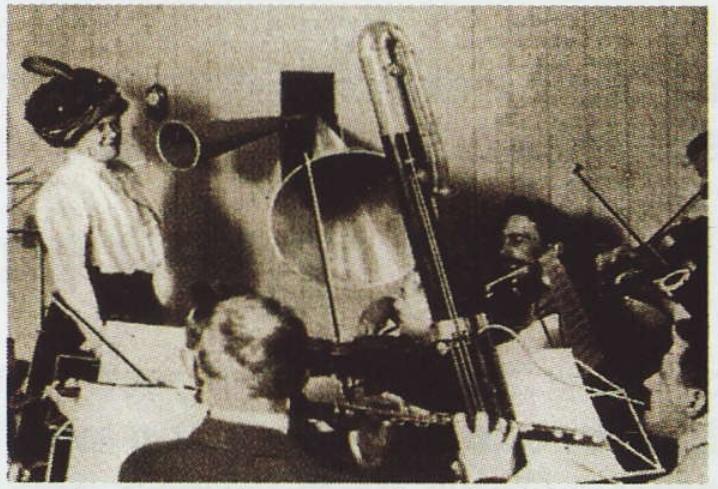
The recordings
For the sake of clarity, the 600-odd recordings made by members of Gimpel’s theatre have been summarised in three tables. [Please refer to the PDF version of this article to see the tables].
As regards these recordings, certain very basic questions need to be answered.
Who were the record companies involved?
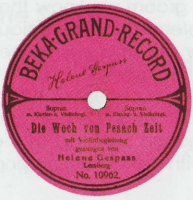
With the exception of Columbia, which was American, all these companies were European. The Gramophone Company and its sister company, Zonophone, were British labels and shared the same sound engineers. Diadalwas a Hungarian label which appears to have served primarily as a vehicle for reissuing Beka recordings, while Metropol was a notorious Russian bootleg company. With the exception of Pathé, a French company, most of the others were German firms, several of which appear to have dealt only with reissues. The very small number of records made by Columbia probably reflects the company’s disastrous initial foray into the European market from which it withdrew in 1910, while the modest number of recordings issued by Pathé may be very much higher. Pathé is supposed to have been, after the Gramophone Company, the largest record company operating in Eastern Europe before the First World War. Its influence was such that in Polish and Russian a patefon is still a synonym for a gramophone.
Despite this reputation, it has left behind almost no trace of its activities. Why this should be is beyond comprehension – possibly it has something to do with the fact that the firm used non-standard technology. Its records played from the centre to the rim instead of from the rim to the centre and could only be played on Pathé record players. Eventually this system became obsolete and Pathé records could only be played on specialist equipment. Nevertheless, this would not explain the extreme scarcity of Pathé catalogues from Eastern Europe.
How do we know these recordings relate to Gimpel’s theatre?
In the majority of cases the entries in the record catalogues or on the record labels simply describe the artist as, for example, ‘Helene Gespass – Lemberg’. Occasionally the artist will be described as vom jüdischen Theater, Lemberg [from the Jewish Theatre, Lemberg] or Mitglied des jüdischen Theaters, Lemberg [Member of the Jewish Theatre, Lemberg]. Nowhere does the name Gimpel ever appear, nor even the words Das deutsch-jüdische Theater [The German-Jewish Theatre], the title that Jakob-Ber Gimpel conferred on his theatre and which was used for decades thereafter. If, however, we compare the roster of artists’ names in Table 1 [ed. – see PDF version for table] with the lists of artists active in the theatre at this time as set out earlier in this article, there can be little doubt that we are dealing with Gimpel’s theatre.
Which orchestra and chorus is used?
This is a far more difficult question to answer. Sometimes the orchestra and chorus are described as vom jüdischen Theater, Lemberg but often the description is merely mit Orchesterbegleitung [with orchestral accompaniment] or mit Chor [with chorus]. In the case of recordings on the Gramophone Company or Zonophone labels, reference to the sound engineer’s reports more often than not reveal that these anonymous orchestras and choruses are in fact ‘from the Jewish theatre’. It would seem reasonable, therefore, to assume that the anonymous orchestras and choruses noted on other record labels are probably also the Gimpel theatre’s own orchestra and chorus. Nevertheless, there are two recordings by Adolf Meltzer on the Favorite label where the orchestra is described as Orchesterbegleitung vom Polnischen Theater, Lemberg [Orchestral accompaniment by the Polish Theatre, Lemberg]. In view of this, we have to accept the possibility that some of the other unnamed musical forces are also from the Polish Theatre or even from ad hoc orchestras organised by the sound engineers.
Who are the conductors and chorus-masters?
These are never named – this was very common practice in the early days of the recording industry. Not only were conductors and the like only rarely credited, but details of composers and lyricists were also routinely omitted. During the period under consideration, Adolf Gimpel was the music director of the theatre, acting as conductor, chorus-master, orchestrator and composer. It is therefore possible that he is the conductor or chorus-master on these recordings, but this is merely an assumption – there is no proof whatsoever.
Where in Lemberg were the recordings made?
Information of this kind is simply not available. Possibly the recordings were made in the theatre at 11 Jagiellońska, but it is equally possible they were made elsewhere. There were no recording studios as such in those days. The recording equipment was primitive but had the advantage of being very portable and a sound engineer could set up his temporary studio almost anywhere – hotel rooms were often used by these peripatetic engineers. It should also be borne in mind that on their visits to Lemberg these engineers would also record a wide range of Polish and Ukrainian titles (reflecting the city’s multi-ethnic composition) and may have preferred to operate from one central location, rather than drag their equipment round the city to multiple venues.
I should point out that not all the recordings referred to here were made in Lemberg – a small number were made elsewhere. These are accounted for mainly by 21 titles recorded by Norbert Glimer for Zonophone in Czernowitz in 1907 or 1908 and all the 20 titles recorded for Deutsche Grammophon by Julius Guttmann – these were recorded around 1928 in Berlin. As both artists (particularly Guttmann) were so intimately associated with Gimpel’s theatre, I felt bound to include them.
Does the recorded repertoire reflect the theatre’s repertoire?
To a large extent. With a few exceptions all these recordings are musical items and, as we have seen, song and dance played a huge role in Gimpel’s theatre, particularly during this period. Furthermore, Table 2 – Operettas displays a preponderance of recordings taken from works by such well-known shund dramatists as Latayner, Hurvits and Shaykevitsh and Gimpel’s theatre was, of course, considered primarily a venue for shund productions (that at least was its reputation during the period these recordings were made). What these recordings do not in any way give us are excerpts from the non-musical productions that the company staged. Although not unknown, spoken word recordings were comparatively rare in these early days of the gramophone, the only exception to this being comic monologues, which were recorded in significant numbers (but not, strange to relate, as many in Yiddish as might be expected).
As regards performance practice, these recordings probably provide a far more faithful image of actual ‘real life’ performances than do, for example, klezmer and cantorial recordings. Both klezmer and cantorial performances are based on the art of extended improvisation and suffer accordingly when constrained to fit into the three minutes or so offered by the single side of a 78 rpm record. To a certain extent all early klezmer and cantorial performances on 78 rpm records represent a distortion of what would have been normal performance practice. The kind of material on these Lemberg theatre recordings, however, would seem almost tailor-made for the three-minute 78 side. I imagine these operetta songs and comic couplets, especially the latter, were in duration not much longer than the time offered by a standard 78. Some performances, such as the Der shuster als rebe (featuring Julius and Salcia Guttmann, Jakob Fuchs and Leon Kalisch), were spread over two sides, making it possible to record extended comic sketches of this nature.
In the absence of any information on the subject, we can only assume that the musical adaptations on these recordings are the work of either Adolf Gimpel or Khone Volfstal, the two people most responsible for the theatre’s music. In many instances, ‘adaptation’ would be too weak a term to use – a significant proportion of the theatre’s repertoire, including its recorded repertoire, consisted of operettas brought over from America. However, what the theatre had to work with when attempting to stage these musicals was just the bare bones of the work. According to the entry for Adolf Gimpel in Zylbercweig, Adolf “orchestrated for it [the theatre] many operettas brought over from America, for which the theatre received only the direktsies or the primshtimen. These orchestrated operettas were then included in the repertoires of Yiddish theatres all over Europe.”
I am not sure how to translate the terms direktsies and primshtimen and so have left them in the original Yiddish. Primshtimen probably refers to something like the main vocal or melodic line of a piece, but direktsies is more difficult to interpret – perhaps it means something like general musical directions such as tempo and other markings. Either way, Adolf Gimpel or whoever else was responsible, would be doing far more than adapting such works. They were in effect almost recreating them, and it would be fascinating, for example, to compare New York recordings of arias from Goldfadn’s Bar Kokhba or Sulamis with recordings of the same pieces made around the same time in Lemberg. In theory, at least, this would be possible.
Table 2 lists the musical numbers from operettas and dramas. These account for 270 of the 605 recordings so far documented. Of the remaining 335 titles, 52 obviously belong to various operettas or other dramatic works, but as the record label or record catalogue does not name the work in question, I have omitted them from Table 1. Of the remaining 283 recordings, 17 are as yet without title, as the information regarding them only mentions performer and catalogue number.
This leaves 266 non-operetta titles recorded. These cover a range of genres, some easily identifiable, others less so. There are Yiddish versions of comic sketches that were the stock-in-trade of the early gramophone – Beim Telephon [On the Telephone]; Beim Zahnarzt [At the Dentist]; numerous scenes from Jewish life such as Bris Mile, Beschneidungsscene [Bris Mile, Circumcision Scene]; Cheder-Szene [Kheder Scene]; Chusen aufrufen, Szene eines Bräutigams [Summoning the Groom]; Chusen Kale besingen [Serenading the Bride and Groom]; Druschgeschank auf einer jüdischen Hochzeit [Presentation of the Wedding Gifts at a Jewish Wedding]; Hakufes, Synagogenszene [Hakufes, Synagogue Scene]; Neujahr in der Synagoge [New Year in the Synagogue]; Purimszene [Purim Scene]; Scheidung vor dem Rabbinat [A Divorce before the Rabbinate] and many more. Various songs referred to as Volkslied [folk song] also feature – A Briwale der Mamen [a Letter to Mother]; Der Kutscher [The Coachman]; Die Heimat [Homeland]; Ganew [A Thief]; Got in sein Mischpet [God in his Judgement] are a few examples. Whether these are genuine folk songs is open to doubt. Some, such as the greatly popular A Briwale der Mamen, most certainly are not. There are also a couple of early recordings of Hatikva (one of these can be precisely dated at 23 November 1909).
Couplets abound – a genre much favoured by gramophone companies of the time. Many are described as ‘comic’ but others are less obviously categorisable – a few examples are: Hob nit kein mojre, Gott ist mit dir [Do Not Fear, God is with You]; Ich Will a Madel [I Want a Girl]; Ich hob ein Mädel [I Have a Girl]; Jüdische Tiroler [Jewish Tyroleans]; Jüdischer Matchiche [Jewish Matchiche]; Reitcouplet [Riding Couplet]. Finally, there is a large group of miscellaneous recordings which are simply impossible to categorise from the title alone: Der Mann mit der Bombe [The Man with the Bomb]; Das Stückele Papier [The Little Piece of Paper (a two-parter)]; Der Arbeitsmann [The Working Man – a song which may prove to be the source of the melody used by the Belf Orchestra on a recording with the same title]; Deutsche Moiden [German Girls]; Die Kimpeturen [The Woman in Childbirth]; Die Welt ist a Chulem [The World is a Dream (another two-parter)] and many, many more.
As for the music itself, it is would be foolhardy to make any generalisations at this stage when so few of the theatre’s recordings are readily accessible, but on the basis of the very limited number available it is clear that the music embraces a wide variety of styles from the semi-operatic arias of Goldfadn’s works, through a generalised vaudeville style that would have been quite at home on the stage of any Edwardian music-hall, to melodies and performances that are intensely and unmistakably Jewish in style. Anglo-American influences are already quite obvious – the melody to Tschali from Chanale as sung by Jacob Fuchs on a Beka recording, turns out to be Dan W. Quinn’s And the Band Played On while, even more remarkably, Heinrich Kanápoff’s rendition on the Favorite label of Oj es kitzelt reveals itself to be a Yiddish version of Harry Lauder’s Stop Yer Tickling, Jock!! The Kanápoff recording, I have to admit, is not actually a
Gimpel’s theatre recording and has not been included in the Tables; but as it was made in Lemberg in June 1909 at the same time as several other Gimpel recordings on Favorite, the temptation to cite it was irresistible. Besides, it is quite possible, indeed more than likely, that the reason Kanápoff was in Lemberg at the time is because he was doing a season at Gimpel’s theatre.
Who bought these records?
This is impossible to say. All we can say with certainty is that these records were expensive and the equipment to play them on even more costly, so they would have been affordable only to those with a moderate to high income. The only evidence I have been able to garner regarding the use of these recordings are scattered references in various Yizkor books. These accounts invariably relate how one of the wealthier inhabitants of the community would use his gramophone player and collection of Jewish recordings to give communal concerts. There is also a charming anecdote in Harendorf’s Teater Karavanen describing how for a while the actor Moyshe Vaynberg travelled around Galicia from shtetl to shtetl giving concerts with an old-fashioned phonograph. This may sound like a precarious way to make a living but, according to Harendorf, Vaynberg made a small fortune from this.
It is possible to state, however, that these recordings were distributed over a very wide geographical area. Surviving catalogues demonstrate that they were marketed not only throughout the Austro-Hungarian Empire, as might be expected, but also throughout the Russian Empire, in Germany, England, South Africa and quite possibly elsewhere. In the USA many of the recordings made by the Gramophone Company and Zonophone were reissued on the Victor label.
***
Conclusion
To sum up, between 1904 and 1913 artists from Gimpel’s theatre made at least 605 recordings. The performers were from a broad selection of its regular artists and include all of its main actors and actresses of the time. The recorded repertoire was wide and varied, probably offering an accurate picture of the theatre’s general performance style as far as its musical productions are concerned (the genre for which the theatre was most famous). Nevertheless, despite the enormous scale of this activity, no one associated with the theatre ever thought fit to mention their close involvement with this sensational, new ‘marvel of the age’. Even Shloyme Prizament, whose work has been so often cited in this article and who himself took part in at least 6 recordings for the Odeon and Jumbola companies, does not give the slightest hint that this furious recording activity was going on. Despite this apparent total lack of publicity, these records, which in total amount to over 30 hours of continuous playing time, were distributed all over the world.
No mean feat for the ramshackle little theatre at 11 Jagiellońska. In fact, it is not only an achievement without parallel in the annals of the Yiddish theatre, but possibly one that cannot be matched by any theatre anywhere in the world.
Listen to Recordings
Several years ago, Michael Aylward and Julian Futter compiled a CD containing recordings from Gimpel’s Yiddish Theatre in Lemberg (Lviv / Lwów), drawing from their extensive collections, which they have allowed me to share on my website:
Download PDF full version
Download the entire article here:

